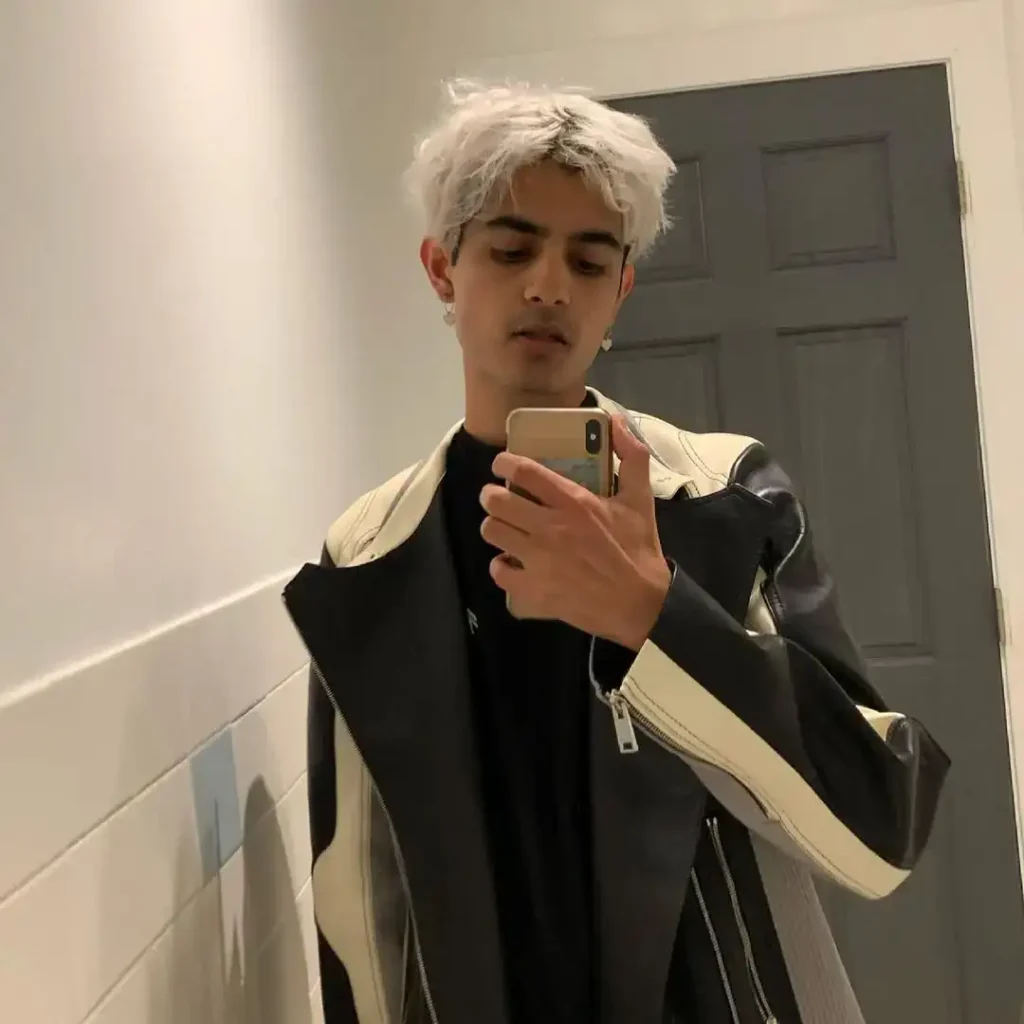What happens when a Nepal-born college student working the night shift at a smoothie shop decides to take on the music industry from his dorm room? With nothing but a laptop and a calculated social media strategy, Abhinav Bastakoti—better known as Curtis Waters—created a series of TikTok videos featuring his now-famous caption “dancing to my song everyday until it goes viral tbh” that transformed him from an unknown student into the first Nepal-born musician to achieve international success.
Curtis Waters’ real name is Abhinav Bastakoti, born December 20, 1999, in Kathmandu, Nepal. This Canadian-American musician, rapper, singer, and songwriter represents a new generation of multicultural artists who have leveraged social media platforms to build authentic global careers. His viral 2020 debut single “Stunnin'” didn’t just make him famous—it created a blueprint for independent artist success in the digital age.
Key Facts at a Glance
| Attribute | Value |
|---|---|
| Full Name | Abhinav Bastakoti |
| Born (Age) | December 20, 1999 (age 25 as of August 2025) |
| Nationality | Canadian-American |
| Ethnicity/Origin | Nepali |
| Birthplace | Kathmandu, Nepal |
| Occupation | Musician, Rapper, Singer, Songwriter |
| Active Years | 2017 – Present |
| Notable For | Viral hit “Stunnin'”, albums Pity Party (2020) and BAD SON (2023) |
| Current Residence | Los Angeles, California |
| Record Label | Independent (licensing deal with BMG Rights Management) |
| Management | Chris Anokute (Young Forever Inc.) |
| Awards | Juno Fan Choice Award nominee (2021), Breakthrough Artist of the Year nominee (2021), Alternative Album of the Year nominee (2021) |
What is Curtis Waters’ ethnicity and background?
Curtis Waters is Nepali by ethnicity and holds Canadian-American nationality. Born in Kathmandu, Nepal, Abhinav Bastakoti experienced a globally nomadic childhood that would later define his artistic identity. He moved to India at a young age, then to Germany at age 4, and finally to Calgary, Canada at age 10.
This multicultural upbringing wasn’t just incidental—it became foundational to his worldview. At age 14, Bastakoti returned to Nepal for three months to receive his Bratabanda, a complex Hindu coming-of-age ceremony. This cultural reconnection occurred precisely when he downloaded FL Studio onto his laptop and started making beats, marking the beginning of his musical career.
While attending Sir Winston Churchill High School in Calgary, he struggled with depression and found solace in music and graphic design. These mental health challenges would later become central themes in his advocacy work and artistic expression.
Parental Influence and the Immigrant Experience
Waters’ parents played a crucial role in shaping both his global perspective and his artistic themes. His father is a professor with a Ph.D. in environmental science, while his mother is a medical doctor with a double master’s degree who currently works in Geographic Information Systems. Their professional pursuits directly influenced the family’s constant relocations across continents.
The immigrant experience of his parents—their sacrifices, ambitions, and pursuit of the “American Dream”—became central themes in Waters’ music, particularly evident in his sophomore album BAD SON. This parental background provides crucial context for understanding why themes of ambition, sacrifice, and cultural identity resonate so deeply throughout his work.
How did “Curtis Waters” become more than just a stage name?
The transformation from Abhinav to Curtis Waters represents more than typical artist branding. Curtis Waters began as a comic book character that Bastakoti created. He explains: “He did a lot of stuff that I was too nervous to do in real life. It was just this fantasy, and I remember I had this thought, ‘You know what? Let me do some real-life performance. Let me be Curtis Waters.'”
The name itself pays homage to two of his favorite artists: Joy Division’s Ian Curtis and Frank Ocean. Originally posting beats online in 2017 as “Frank Waters,” he evolved into Curtis Waters as both artistic persona and creative liberation tool.
At 17, he moved to Cary, North Carolina, due to his parents’ educational pursuits—a transition that would prove crucial for his later success.
Curtis Waters’ approach to viral success wasn’t accidental—it was strategically calculated. While studying at UNC Greensboro and working at Tropical Smoothie Cafe, Waters analyzed viral TikTok hits including Lil Nas X’s “Old Town Road” and The BoyBoy West Coast’s “U Was at the Club.”
His strategy was methodical: “Me and my brother were teasing the song on TikTok everyday, promoting and really going crazy for about two months before it came out.” The breakthrough was part of a consistent campaign. He uploaded a video of himself and his brother doing a simple step-touch dance, accompanied by the now-famous caption, “dancing to my song everyday until it goes viral tbh.”
The results exceeded all expectations. “Stunnin’,” featuring Canadian musician Harm Franklin, was included in more than 25,000 TikTok videos, earning over 500,000 Spotify streams in just one week. According to Rolling Stone, it became “the fastest unsigned record to go into Spotify’s flagship playlist, Today’s Top Hits, since Arizona Zervas’ ‘Roxanne.'”
The song’s commercial impact extended beyond streaming. Mercedes-Benz featured “Stunnin'” in a commercial campaign in July 2020. By summer’s end, Waters was earning over 700,000 daily streams and had transformed from smoothie shop employee to international sensation.
What recognition has Curtis Waters received in the music industry?
Curtis Waters received three Juno Award nominations in 2021, establishing his credibility within the Canadian music industry. The Juno Awards recognized him in the following categories:
- Juno Fan Choice Award (nominated)
- Breakthrough Artist of the Year (nominated)
- Alternative Album of the Year for Pity Party (nominated)
These nominations placed Waters alongside established artists like The Weeknd, Justin Bieber, and Jessie Reyez, validating his rapid rise in Canadian music. The recognition was particularly meaningful as it acknowledged both his commercial success and artistic merit.
How does Curtis Waters’ music reflect his multicultural identity?
Waters’ artistic vision extends far beyond viral hits. His debut album Pity Party, recorded in his UNC Greensboro dorm and released in October 2020, showcases genre-blending artistry. One reviewer from NYLON noted: “The throughline in these 12 disparate tracks remains Waters’ distinct point of view, simultaneously self-deprecating, sincere, and disarmingly honest.”
Waters draws from an eclectic range of musical influences that reflect his multicultural background. Beyond his acknowledged inspirations Joy Division’s Ian Curtis and Frank Ocean, he has publicly cited influences including Lil Wayne, Blink-182, and My Chemical Romance. This diverse musical palette helps explain his unique sound that seamlessly blends indie rock, pop-punk, and hip-hop elements.
His sophomore album BAD SON, released June 23, 2023, represents artistic maturation and cultural exploration. Waters describes the project as a decade-long emotional process: “This album was the first time in 10 years where I’m like, ‘Oh, I did it. I told what I was trying to say since I was a kid, I made the story.'”
The album explores immigrant identity themes, with Waters candidly addressing “his humble beginnings during his parents’ pursuit of the American dream” and serving as “a passionate admission of the struggles faced by many first and second-generation immigrant children.”
How old is Curtis Waters and what drives his mental health advocacy?
As of August 2025, Curtis Waters is 25 years old, having been born on December 20, 1999. Waters has been remarkably open about his mental health struggles, discussing his experiences with depression and bipolar disorder publicly. He has expressed his desire to become a mental health advocate specifically in Nepal, where such discussions remain culturally challenging.
His transparency serves dual purposes: personal healing and public service. Waters explains: “Art has been the only way for me to cope with life since I was a kid. I used to write poems, draw, and all of this stuff.” This authentic approach to mental health discourse has resonated globally, making his music a source of comfort for fans facing similar challenges.
Why did Curtis Waters choose independence over major record labels?
When “Stunnin'” exploded, Waters faced numerous major label offers but deliberately chose a different path. He recalls the experience: “It felt like a numbers game. People just see the song going viral on TikTok, they call you, and they say, ‘We’re gonna sign you today!’ But what’s the name of my album? What do you know about me?”
Instead, Waters partnered with veteran A&R executive Chris Anokute, who had previously worked with Katy Perry and Rihanna. They structured a “license deal” through BMG Rights Management where Waters retains ownership of his music after a set period while splitting profits evenly.
This decision inspired his song “System,” described as a “brittle, declamatory punk missile” with the message: “I’m boutta fuck the system up.” Waters’ choice represents a new model for artist independence in the streaming era.
Live Performances and Collaborations
Curtis Waters has established himself as a compelling live performer with high-energy shows that translate his recorded music into captivating stage experiences. His first headlining tour in 2021 showcased his ability to connect with audiences beyond the digital realm, with performances known for their infectious energy and welcoming atmosphere for both new and longtime fans.
The collaboration between Curtis Waters and Harm Franklin on “Stunnin'” proved essential to the song’s creation and success. Franklin, a Canadian musician, provided the featured vocals that helped elevate the track’s appeal and commercial viability. This partnership demonstrates Waters’ ability to work effectively with other artists while maintaining his distinct creative vision.
Waters has continued to collaborate with various artists throughout his career, including featured appearances on tracks and joint performances that have expanded his artistic reach and introduced his music to new audiences.
Frequently Asked Questions
Q: What is Curtis Waters’ real name?
A: Curtis Waters’ real name is Abhinav Bastakoti.
Q: What ethnicity is Curtis Waters?
A: Curtis Waters is Nepali by ethnicity and holds Canadian-American nationality.
Q: How old is Curtis Waters?
A: Curtis Waters is 25 years old as of August 2025, born December 20, 1999.
Q: Where is Curtis Waters from originally?
A: Curtis Waters was born in Kathmandu, Nepal, making him the first Nepal-born musician to achieve international success.
Q: How did Curtis Waters become famous?
A: Curtis Waters became famous when his strategically promoted single “Stunnin'” went viral on TikTok in 2020.
Q: What genre of music does Curtis Waters make?
A: Curtis Waters’ music is a blend of indie pop, alternative hip-hop, and rock, often described as indie hip-hop.
Q: Where does Curtis Waters currently live?
A: Curtis Waters currently resides in Los Angeles, California.
Q: What is Curtis Waters’ net worth?
A: Curtis Waters’ exact net worth is not publicly disclosed, though his streaming success and independent status suggest significant earnings.
Q: Is Curtis Waters signed to a major record label?
A: Curtis Waters maintains independence through a licensing deal with BMG Rights Management that preserves his creative control.
What makes Curtis Waters a significant figure in modern music?
Curtis Waters represents more than viral success—he embodies the democratization of music industry access. His career demonstrates that authentic artistry combined with strategic digital marketing can create global impact without traditional gatekeepers.
As a Nepali-Canadian artist, Waters has not only achieved international success but has also become a symbol of what is possible for South Asian artists. His story has helped pave the way for other multicultural artists to find a global audience. His candid discussions about mental health, immigrant identity, and the American Dream have created new standards for artist authenticity in digital spaces.
The Curtis Waters phenomenon illustrates how multicultural identity can become a superpower rather than a barrier in today’s connected world. His story continues inspiring artists who refuse to choose between commercial success and artistic integrity, proving that with creativity and determination, both are achievable.
Waters currently resides in Los Angeles, California, where he continues developing his artistic vision while maintaining his role as a voice for immigrant communities and mental health awareness. His influence on viral music trends and social media marketing strategies has fundamentally altered how emerging artists approach career building in the streaming era.
References / Sources
This comprehensive biographical article draws from authoritative sources including:
- Rolling Stone magazine features and interviews
- Juno Awards official nominations and records
- NYLON magazine reviews and profiles
- CBC Music coverage and analysis
- Billboard industry reports
- Official Curtis Waters social media platforms and statements
- BMG Rights Management press releases
- Verified streaming platform statistics
- Reputable music industry publications and databases
Discover more compelling stories of global artists reshaping the music industry on Feelepa, where cultural diversity meets artistic innovation.






